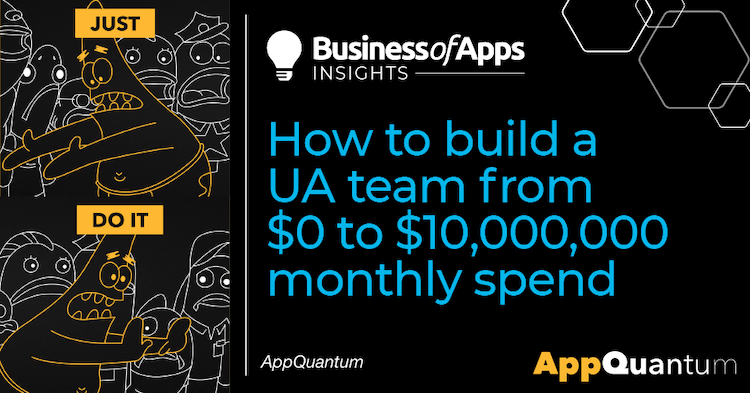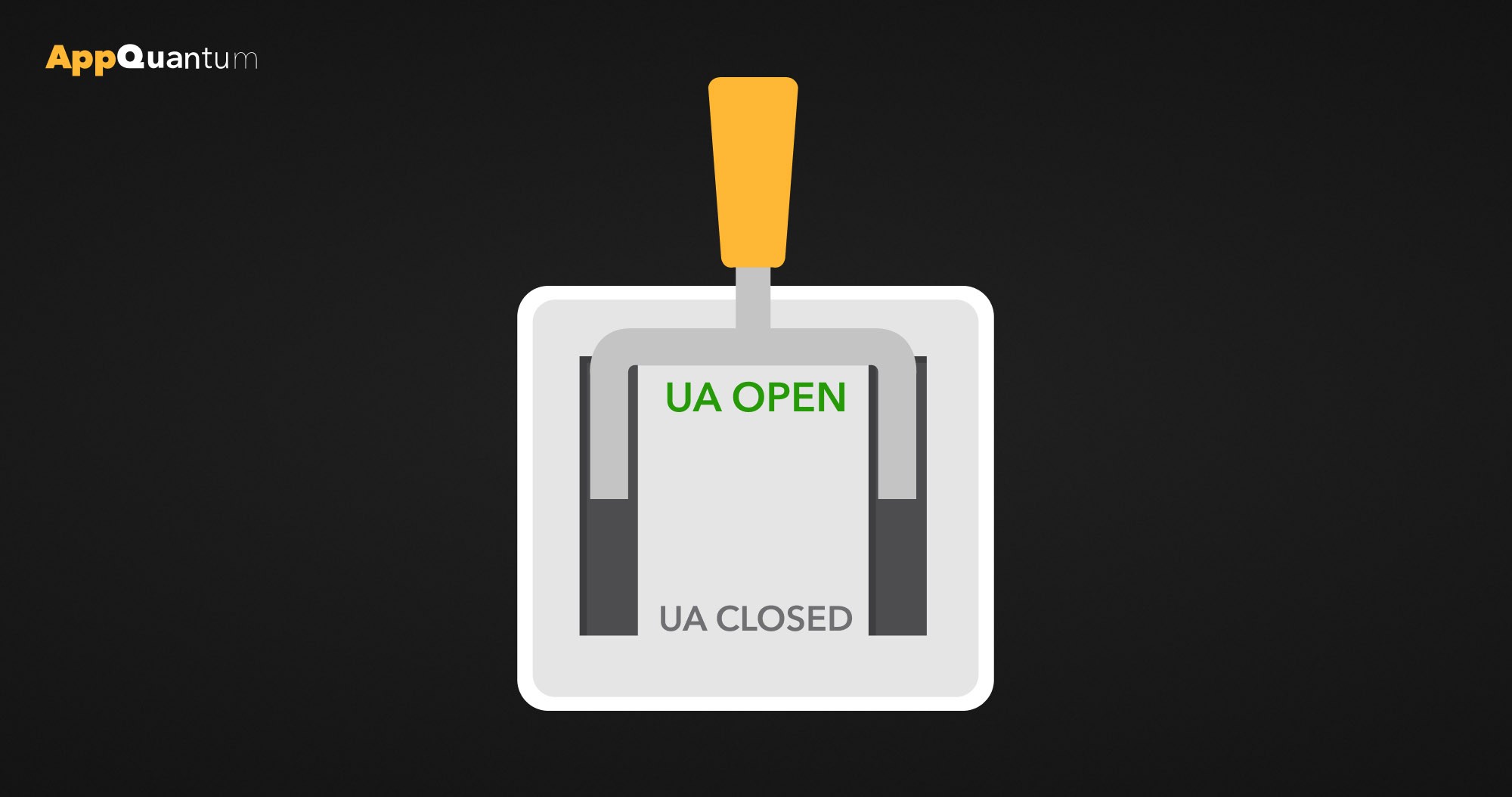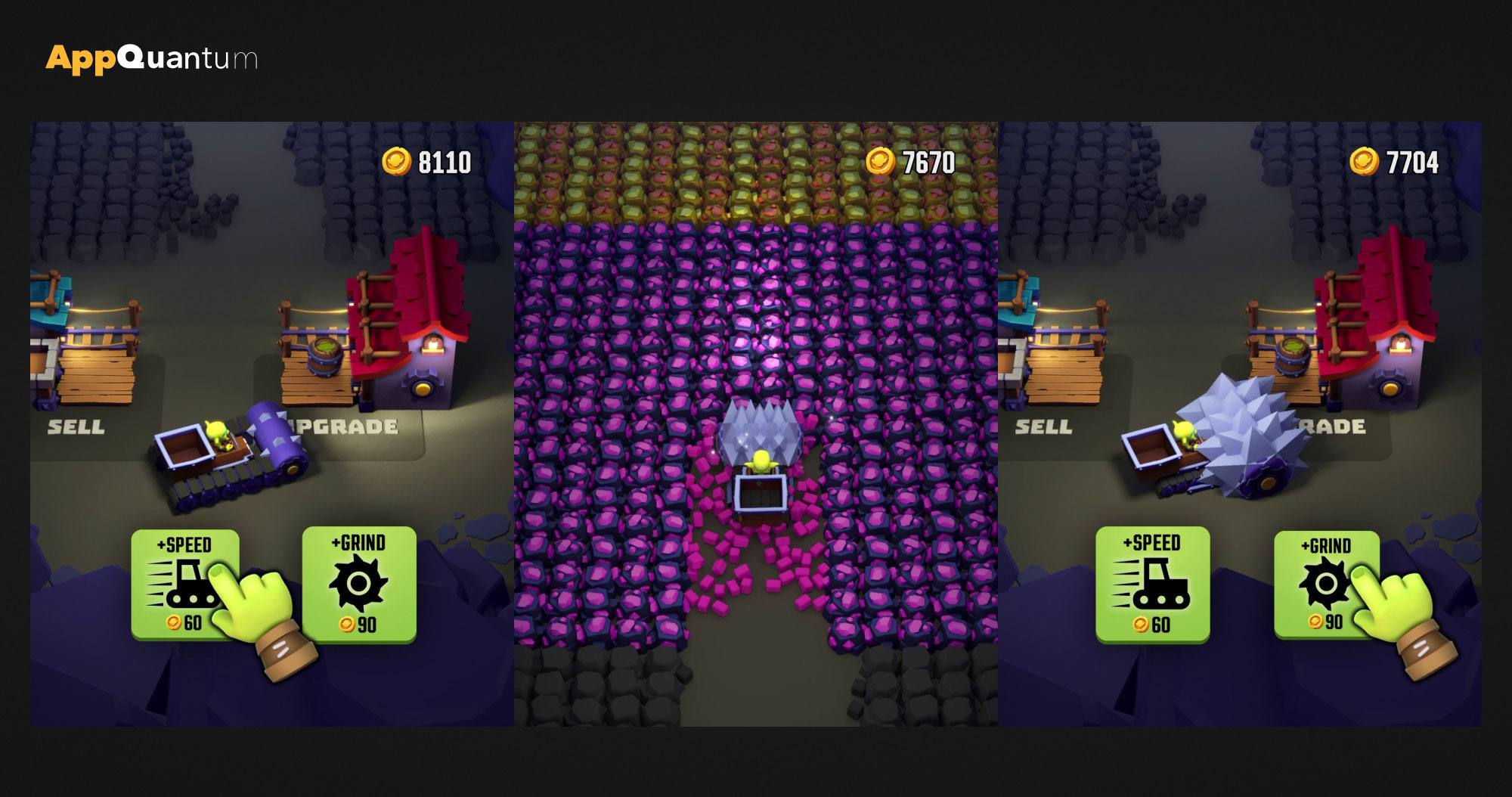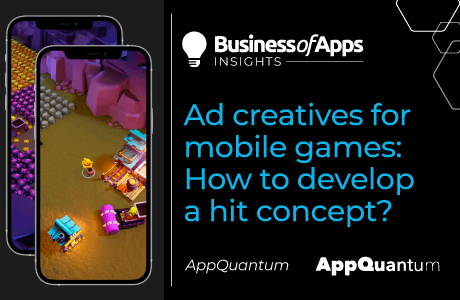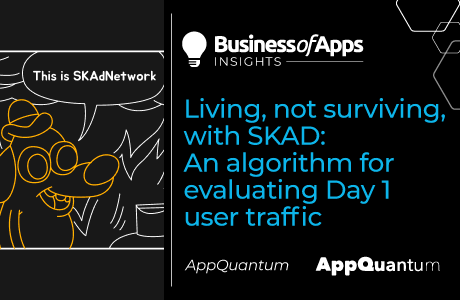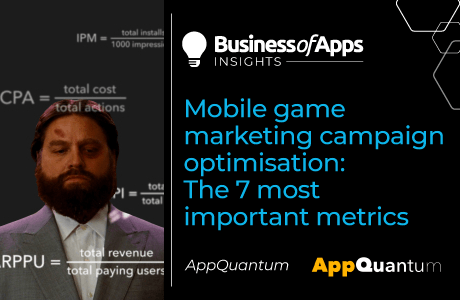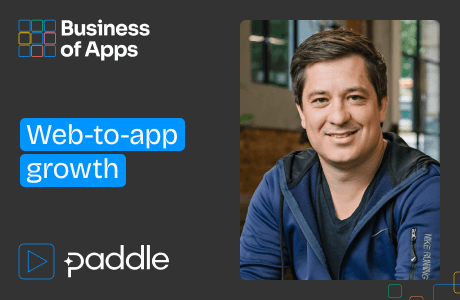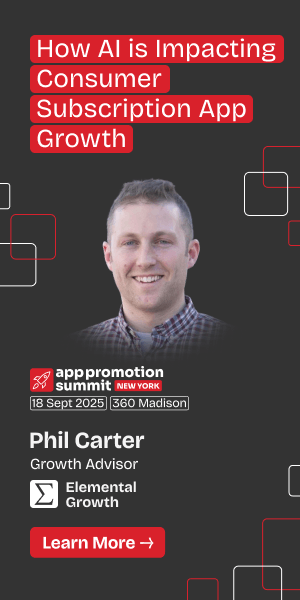The mobile game market is so large and so saturated that even the most interesting and polished projects can easily become lost among the others. To prevent this, you need to attract users through marketing and advertisements. This is the work that User Acquisition teams do.
At first, AppQuantum didn’t have its own UA team, as we made do with the resources provided by the agency AdQuantum, with whom we still work today. However, we needed to establish our own department, which would be focused entirely on our products. The decision to set up such a team was made in the fall of 2020, and in January 2022 we reached a monthly spend of $10,000,000. How we managed that and what it takes to reach such a result, we’ll tell you in this article.
Where to start?
First, you need to select the right people. We believe that games cannot achieve success without a proper team behind them. In terms of UA, people with experience are prioritised but User Acquisition in game development differs greatly from that of the other sectors, and people with outside experience are tough to re-train.
What this means is one shouldn’t be afraid to hire people without experience, as the more important qualities are their personal traits. Among those are attentiveness, determination and responsibility. A person can have a lot of experience but still be incompatible with the job, not to mention the fact that an inexperienced employee is often easier to train than a seasoned one. You should also keep an eye on how the new employees fit into the team personality-wise.
Is it worth the hassle? Without promotion you risk your project not being noticed by enough players, so UA is essential, one way or another. The expenses question is easily answered by a fairly simple ROI calculation. Imagine that one UA manager is paid $1,000 per month. Working efficiently, such a specialist can bring in a 5-10 times higher revenue, even when you consider all the expenses associated with them. The bigger the team, the higher the revenue, as every employee will be bringing in similar sums.
How to train the new employees?
In our experience, it’s not as hard as it might seem at first glance. We have a knowledge vault with essential information, which we constantly update – it helps new arrivals to learn our processes and get up to speed. Other than that, the most efficient way to learn is by working under senior employees’ supervision. Of course, we don’t expect new hires to be making decisions on their own, and the team will help them find all the answers. The ability to ask the right questions is also a major advantage, by the way.
Knowing a large amount of traffic sources is a plus but not a requirement. The logic differs but the gist of it is the same – attract users, while spending less than they bring in. There are sources that require a lot of manual work (like Vungle), and one needs to pay a lot of attention to analysis and calculations. You’ll also need to be patient and attentive, or work to automate the processes. There are also easier sources (like Moloco), and employees with less experience can start with them.
Should you continue working with an agency?
Working with an agency is crucial, especially at the early stages, since it provides access to years worth of expertise. The knowledge and experience in creative work, cooperation with networks and in relevant sectors will not only help set up the work properly, but also strengthen and support the team in the long term.
In our case, we began and continue to work with AdQuantum performance marketing agency which has for many years worked with gaming and non-gaming industries and has a lot of experience as well as a 300-strong creative team.
🔍 Master Onboarding with JTBD & MaxDiff
Discover how to optimize your app’s onboarding process using the Jobs-to-be-Done framework and MaxDiff analysis.
Download nowHow to allocate resources?
First, it’s important to determine the team structure. If you only have one project, all employees work with all networks. Later, as the team grows, it’s divided by traffic sources. If your company is a larger one, and runs multiple projects, the question gets more complex. At the time of writing, we use a hybrid model, where the team is divided by projects and sources.
With that, we are working to establish an exchange of experience between the agency and team, as well as develop a line of business with DSP networks. Previously they weren’t used much but now they take up a large portion of the UA budget. The goal with DSP is to buy impressions that fit the advertiser’s requirements best, for as small a cost as possible. In essence, the DSP allows advertisers to buy the audience rather than specific placements.
From preparation to action
As for the work itself, we first run a test on a well-performing source, which serves as a benchmark. In the first few days of tracking it, we get an understanding of what kind of results to expect and begin working with the rest. Some networks have a learning period and a waiting period (up to two weeks), during which ROI shows negative. Using them as starting points for an untested project is risky, since we won’t be able to say conclusively whether or not the negative result is due to lag or problems on our side, losing valuable time.
How to not get lost in numbers?
Analyzing performance is another essential part of this work. Currently we have it set up like this: top management tells us the profits they want to achieve by the end of the year. UA takes this goal and cross-references it with the projects and traffic sources. The goal is then broken up by project and network and these subgoals – by quarter and month.
That way every team member knows the profits they have to make in any given month in order for the whole department to achieve the overall goal. Naturally, it’s impossible to plan the whole year by month in advance. These plans serve as a reference, or roadmap, which is easily adjusted to the current situation within the quarter or month.
For reports we make two types. First – the predictive one, which tells us how much traffic has been ordered and how large a profit we can expect. This data is based on the first few days. The second type is a report using final stats. For example, we set the KPI as ROAS Day 7 and use it as a basis.
Nobody works alone
It’s important to remember that a UA team cannot work effectively in a vacuum, it needs to cooperate with the other departments. For instance, it’s imperative to work with the creative team, as game promotion largely depends on the quality of the ads. Without a good ad, no team can achieve high profits, but with a good one, even a less than ideal department will have a much easier time doing it.
In addition, the UA team needs to work closely with the analytics department (especially marketing analytics). UA specialists need to see how trends change, in order to work effectively. A new feature can be added into a game, user behavior can change, a new popular mechanic can emerge. These factors make existing KPIs obsolete. Analytics helps adapt to new conditions quickly and with visible results.
Wherever you are
Despite the need to work in conjunction with other teams, UA specialists don’t necessarily have to be in one place physically. We have a few people who work better remotely than in the office, for example, due to factors like saving time on commutes.
What to watch out for
UA teams should always remember to not “put all the eggs in one basket”. Diversifying traffic sources is one of the most important rules of this work. For example, when SkAD Network was introduced into iOS last year, many campaigns saw a dip in results across multiple sources. Others, meanwhile, continued working normally, so those who purchased traffic from a wider range of sources, ended up in a better situation than those who focused on one or two.
However, there is no one-size-fits-all solution here either, diversification shouldn’t be the main goal. If today one source performs well, while another doesn’t, you don’t pull out of the latter, you increase both, pulling the less performing one higher. We also focus different team members on different sources, because if they all worked on everything, everyone would direct all their energy to the best performing network, to “do their part”. This is also a bad approach, which is why we split the team by projects and networks.
It’s also necessary to remember the risks, of which the main one is falling into an income gap. Let’s say, the team purchases traffic with ROI = 2, knowing that for every dollar spent, they will get two back. However, the money will only arrive in 7 days or several weeks, depending on the game. So, despite good creatives and high ROI predictions, less money flows in than expected while you still have to pay the networks. The risk can be minimized with forecasts. For example, when we attract a user, we don’t know how much they’ll bring in overall and within the first 20 days, so we calculate a forecast for every day and end of month, using that to plan our expenses.
Goal achieved, what next?
User Acquisition is a constant process of iteration. Achieving a $10,000,000 monthly spend, however awesome, is no reason to stop. This doesn’t mean you should pour huge amounts of money into a project that potentially isn’t worth the investment. For some companies 10 million is only the beginning, while for others it’s an unachievable dream. As for AppQuantum, this is definitely not the limit, we have barely begun our work. UA is not a field with continuous growth, free of fluctuations, but we intend to keep going.
To achieve success, you need to constantly accelerate, since even keeping up the current level takes growth and development. Creatives wear out, the audience can run out, so successful UA work requires a complex approach. You have to develop the project further, update the creatives, expand network expertise and find new sources. Even if the situation is stable overall, plans have to be updated and work should be approached with flexibility.
If you have any questions left regarding user acquisition, or would like to entrust your mobile game to a team of professionals, who will lead millions of new players to you, hit us up 🙂



